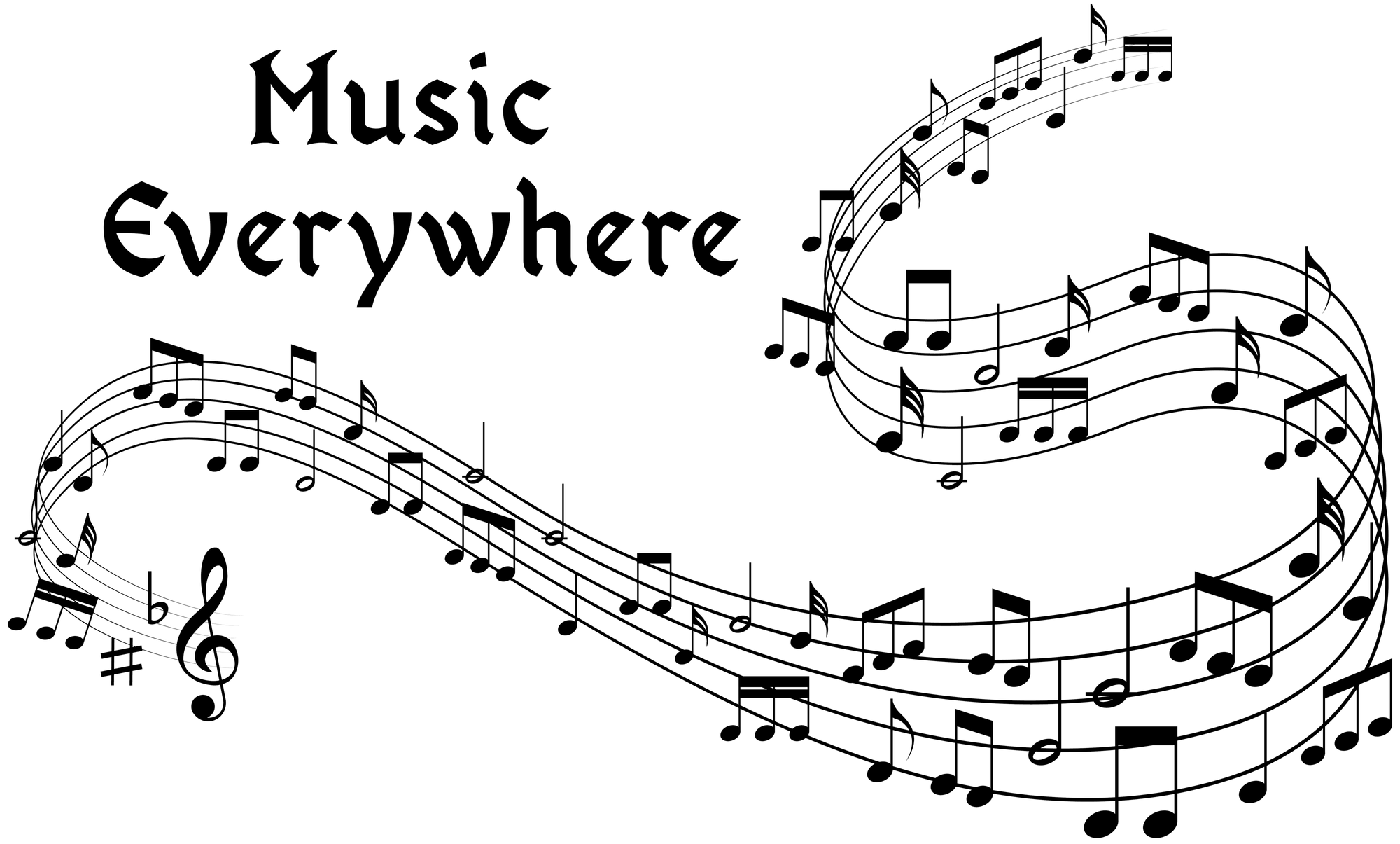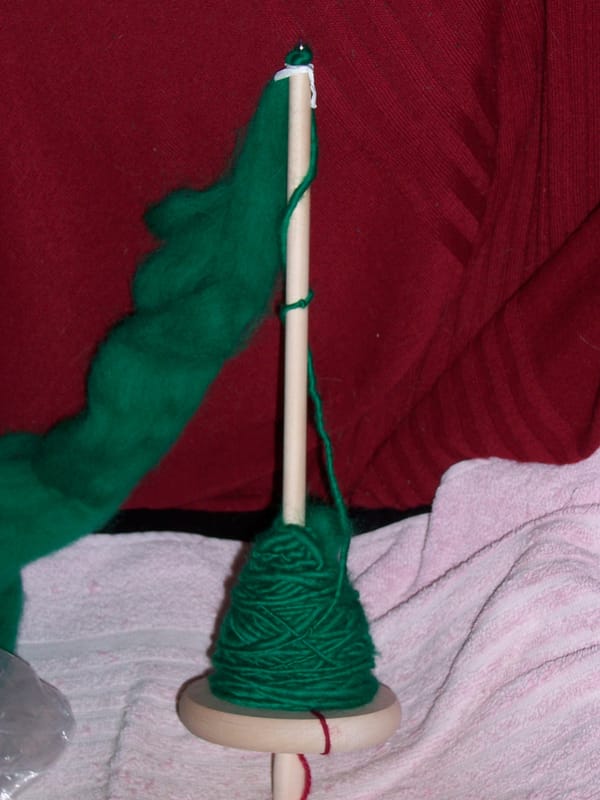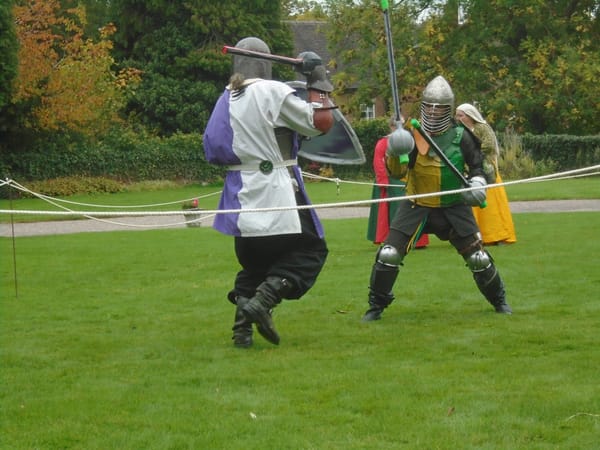A relaxing Bath
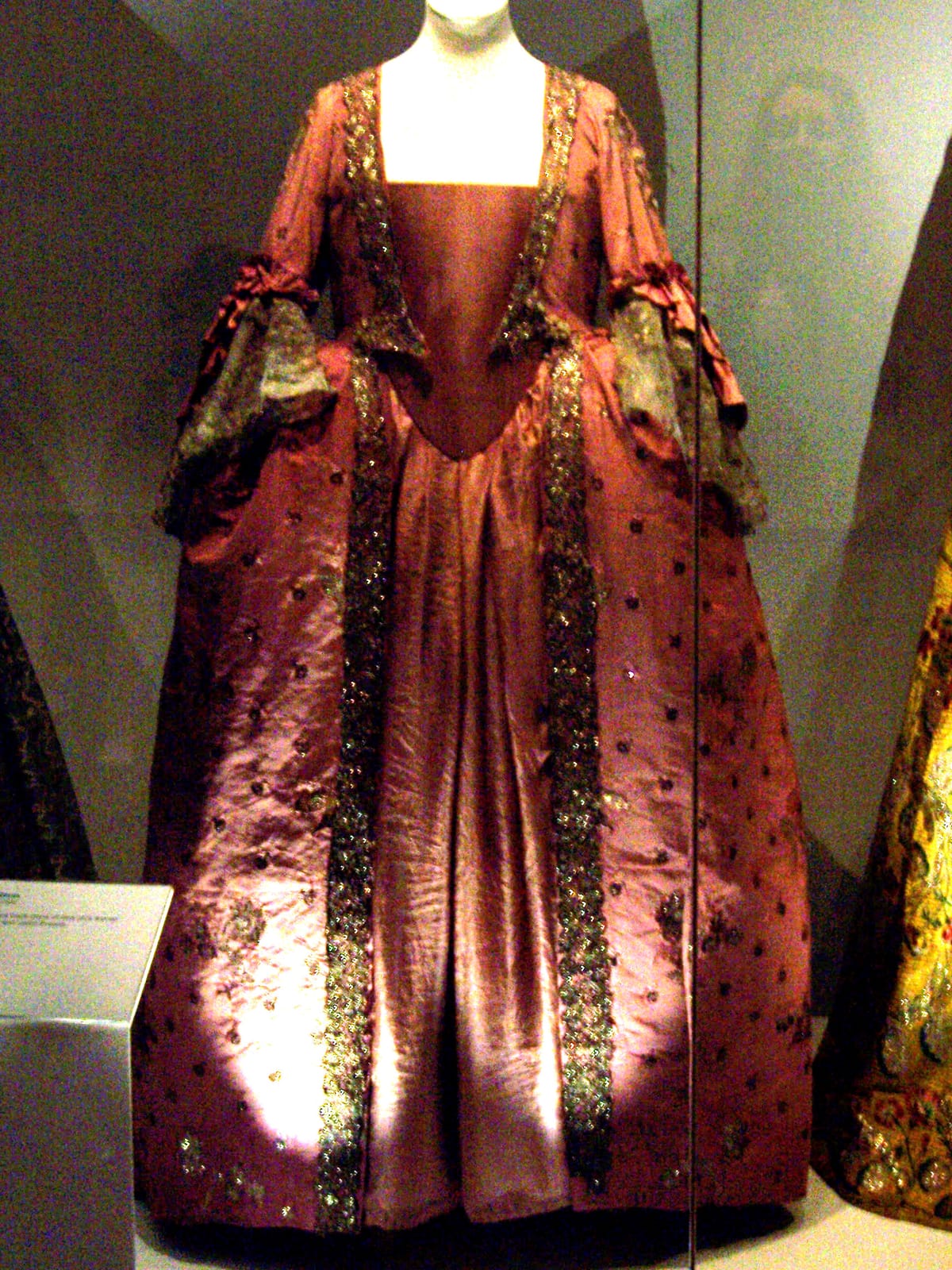
Back in 2011 I won a very welcome and unexpected prize. It was a trip to the Bath Fashion Museum, courtesy of Your Wardrobe Unlock'd (I would love to link them, but it appears they're no longer running, which is very sad because what they did was unique), including a stay in the most luxurious hotel I've ever had the pleasure of sleeping in. I mean, I got a four-poster bed. It was that special. There was also a year's subscription to YWU, which would otherwise have been rather too expensive for me at the time. I still have quite a lot of the articles stored away on my hard drive. And the Bath Fashion Museum was where I saw the 1840s embroidered waistcoat that inspired me to make my own; I do have a photo but it's not good enough to show here. I should explain that YWU published a lot of original historical sewing research, covering the period from mid-mediaeval to the start of the 20th century; so if you wanted to know exactly how to go about making a baroque ballgown or a pair of Victorian trousers, they were your go-to.
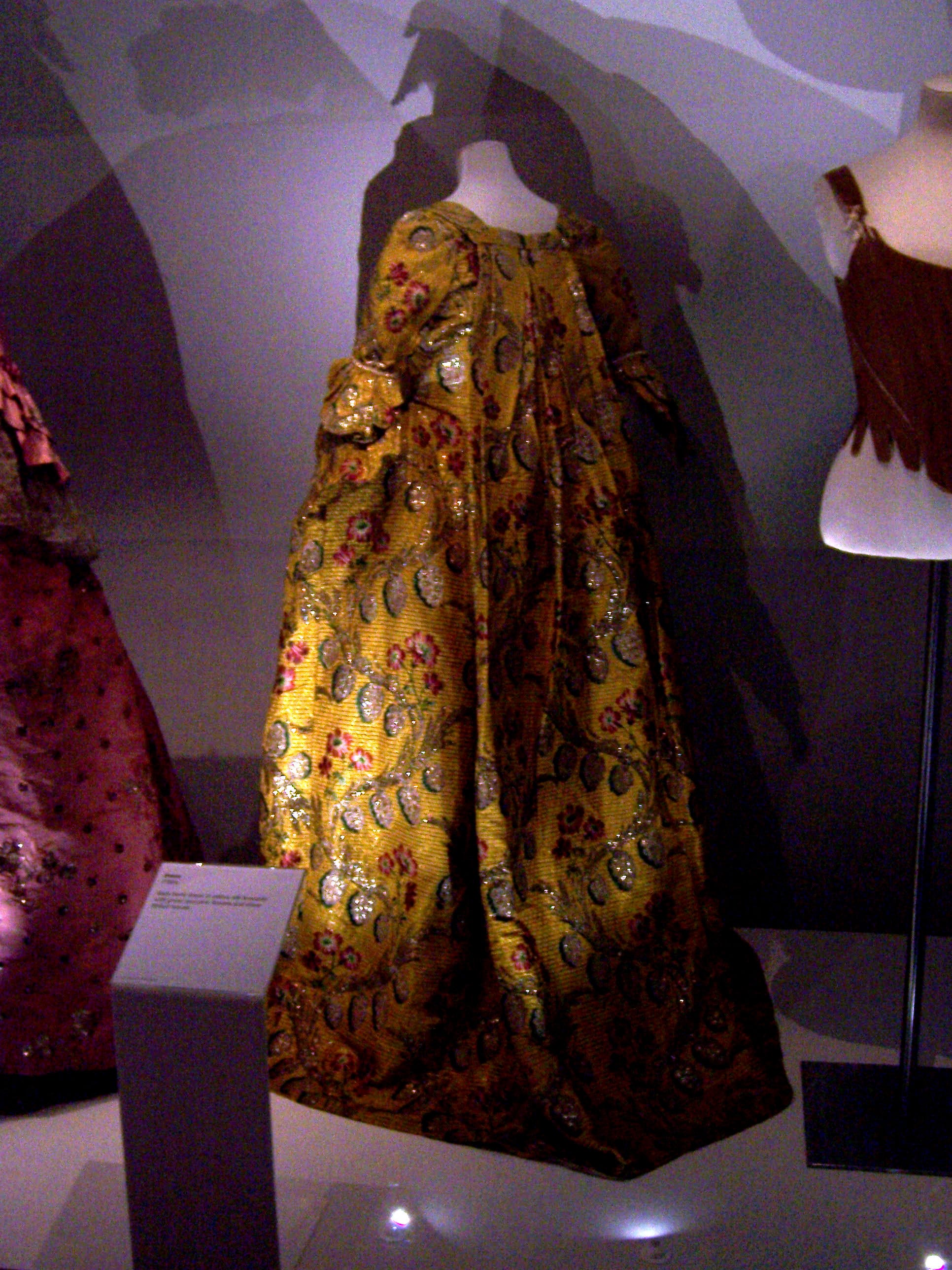
When the modern dressmaker looks at garments like this, they usually think, at least on a subconscious level, that they must have been very heavy; this is not just because of the bulk, but because a lot of the designs look more like modern upholstery fabrics than dress fabrics. Well, we got a tour behind the scenes, and we got to look at some of the original historical fabrics (you had to handle them with gloves); and in fact, generally, they were very light. Most of these dresses would not have been especially heavy in themselves, though some of the underpinnings might, depending on the exact time period (baroque panniers weren't necessarily heavy, but a Victorian bustle stuffed with horsehair would have been).
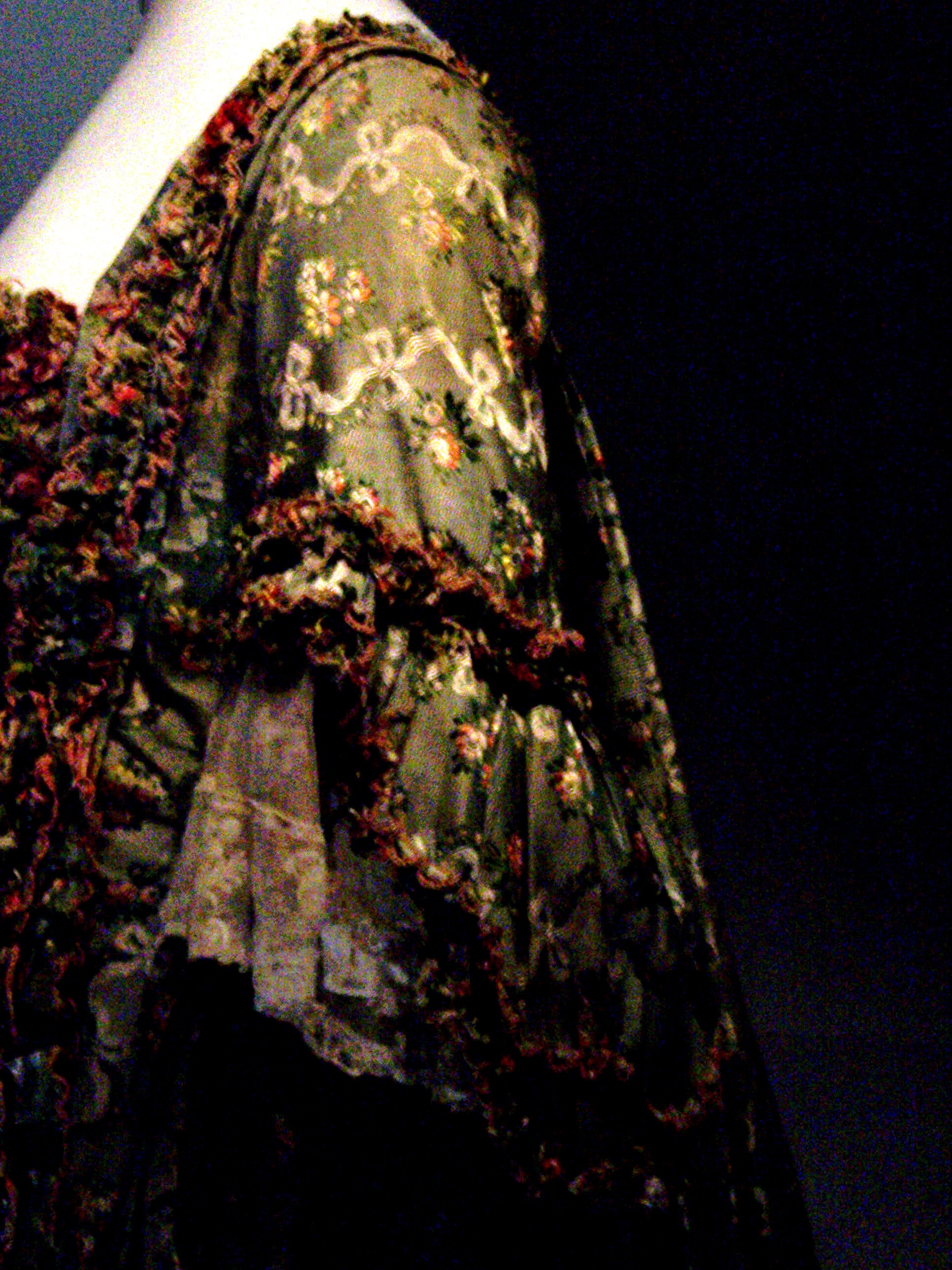
On the other hand, some of them were very bulky. For this one, you probably needed double doors. I don't think you'd have even got it into my little flat. (Well, maybe sideways... but there's a bend in the hallway and I'm not sure how it would go round that!)
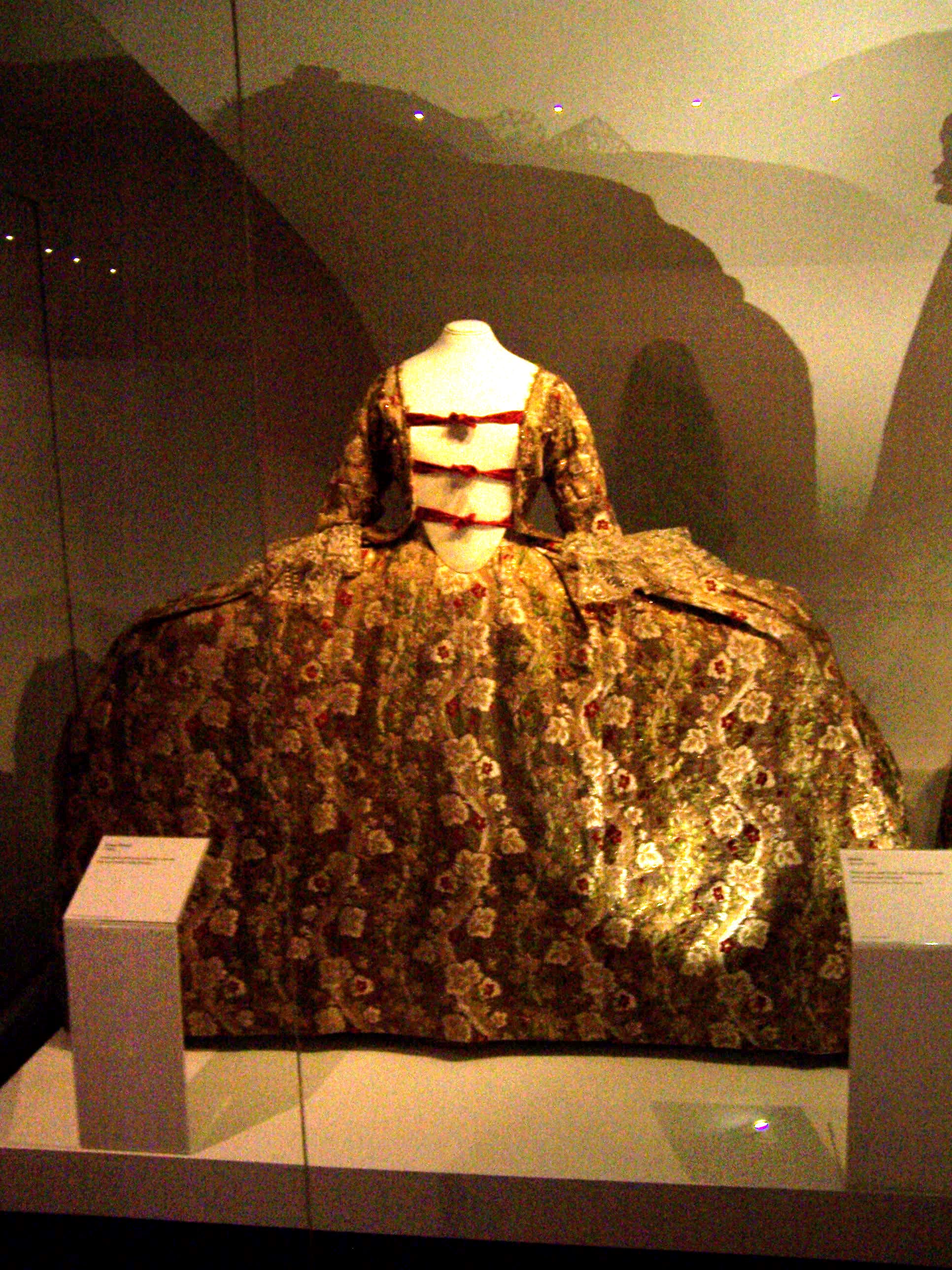
A dress like this would be worn over a stomacher, or front panel, which was separate and usually also very ornate. To be fair, this sort of thing wasn't for every day. Otherwise, there'd have had to be some careful manoeuvring every time two ladies passed each other in the street.

The one above, obviously, would also have originally had a stomacher. I apologise, by the way, for the rather subfusc lighting; they have to keep the light fairly low, as the colours will fade if exposed to bright light for very long. Hopefully you can still see reasonably well. The one shown below is the oldest dress in their collection; this is the Silver Tissue Dress (made from a tissue-like silk woven with a silver thread), and it dates back to the 1660s. Complete 17th-century garments are extremely rare, so it was quite something to be able to see it.

It's difficult to tell what colour it originally was, but almost certainly it was not this rather sad brown. The dye has deteriorated over time. The silver thread is not very clear, but you can see a little of it near the neckline and another bit of it at the waist. I'm also not sure if the white underbodice is part of the original or a modern reconstruction, but I suspect the latter.
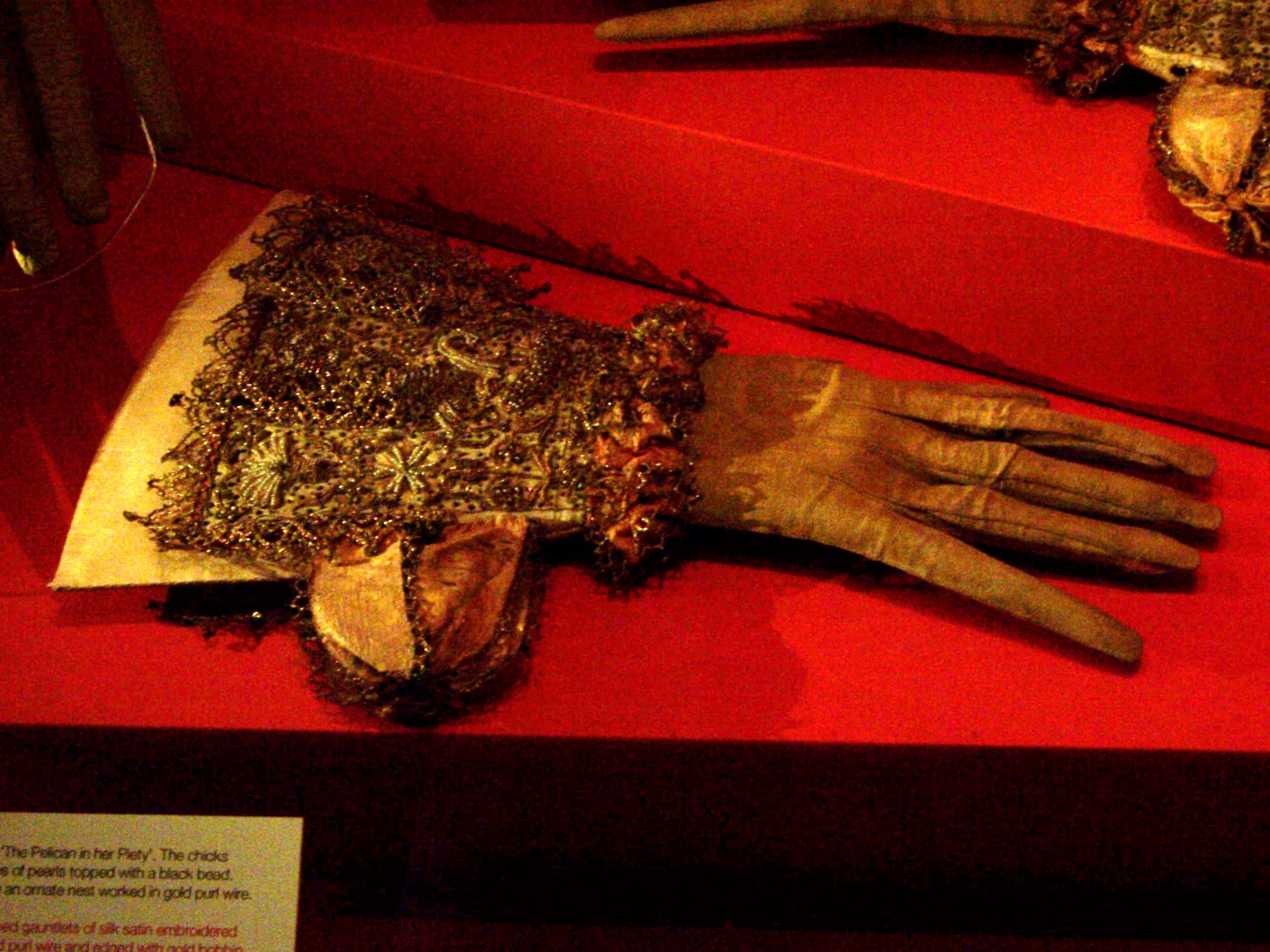
I did not realise until it was too late that I was not supposed to be photographing the gloves; the sign asking visitors not to do it was not as conspicuous as it should have been. On the other hand I didn't use the flash, which was what they were really worried about, so I don't feel too guilty about my error. My camera has a handy museum setting with a long exposure to avoid the need for it.
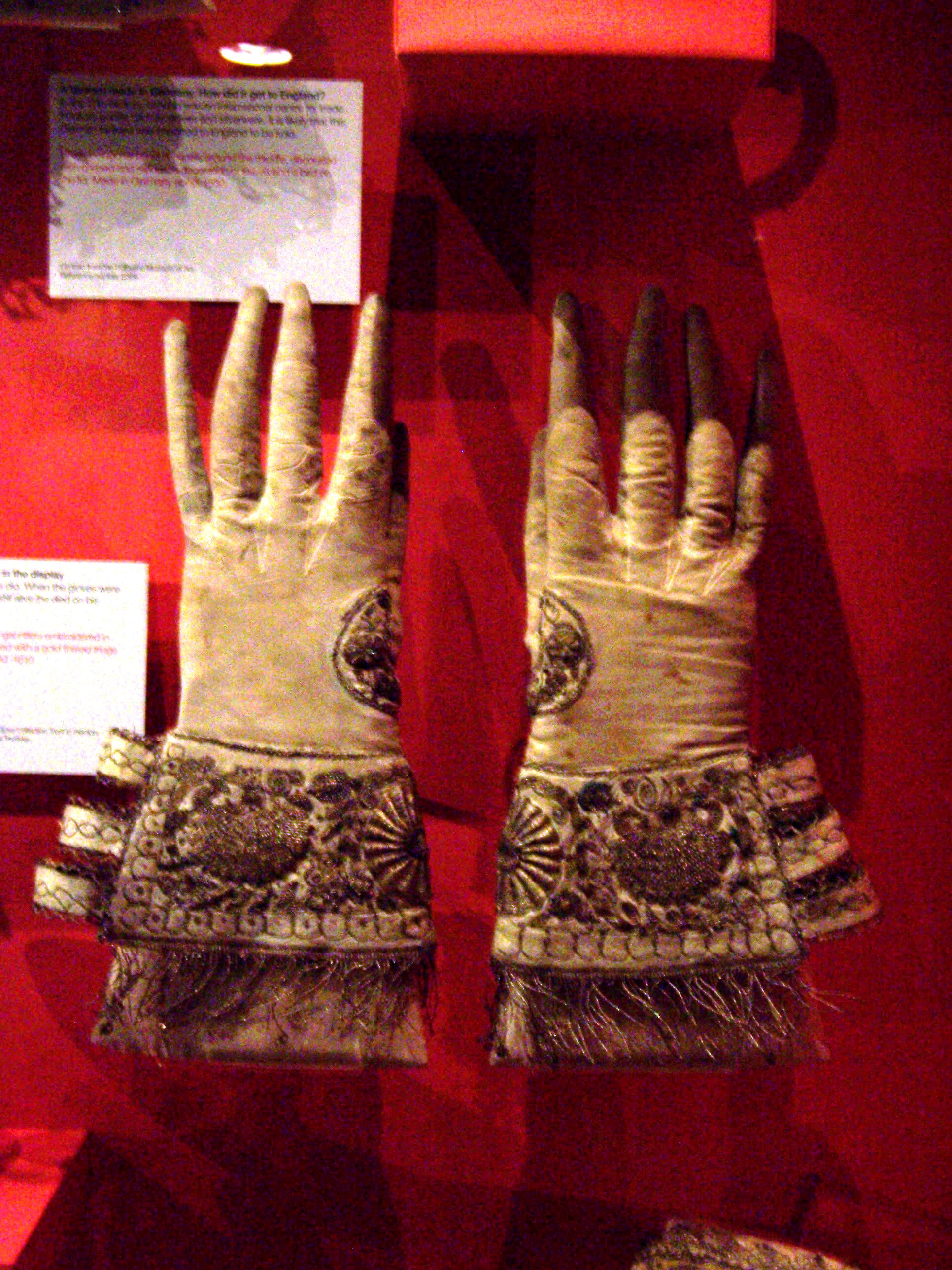
According to one of the helpful signs, plain gloves did exist in the 17th century; we know about them from inventories. They just didn't tend to survive. Most of the gloves on display were almost more works of art than mere clothing, and so people tended to look after them more carefully.

See the thing that all these gloves have in common? It's the finger gussets. Modern gloves have gussets that stop at the base of the finger. These don't; they extend some distance down the hand, making the fingers look very long. This must have been a fashion thing, because it is a whole lot easier to make the gussets the modern way. On the pair above, it's even emphasised using embroidery.

I don't know if it's just me, but I'd be terrified to wear this. I'd be afraid of it getting caught on something. But then I'm not 17th century nobility, so who knows? Anyway, it's frabjous.
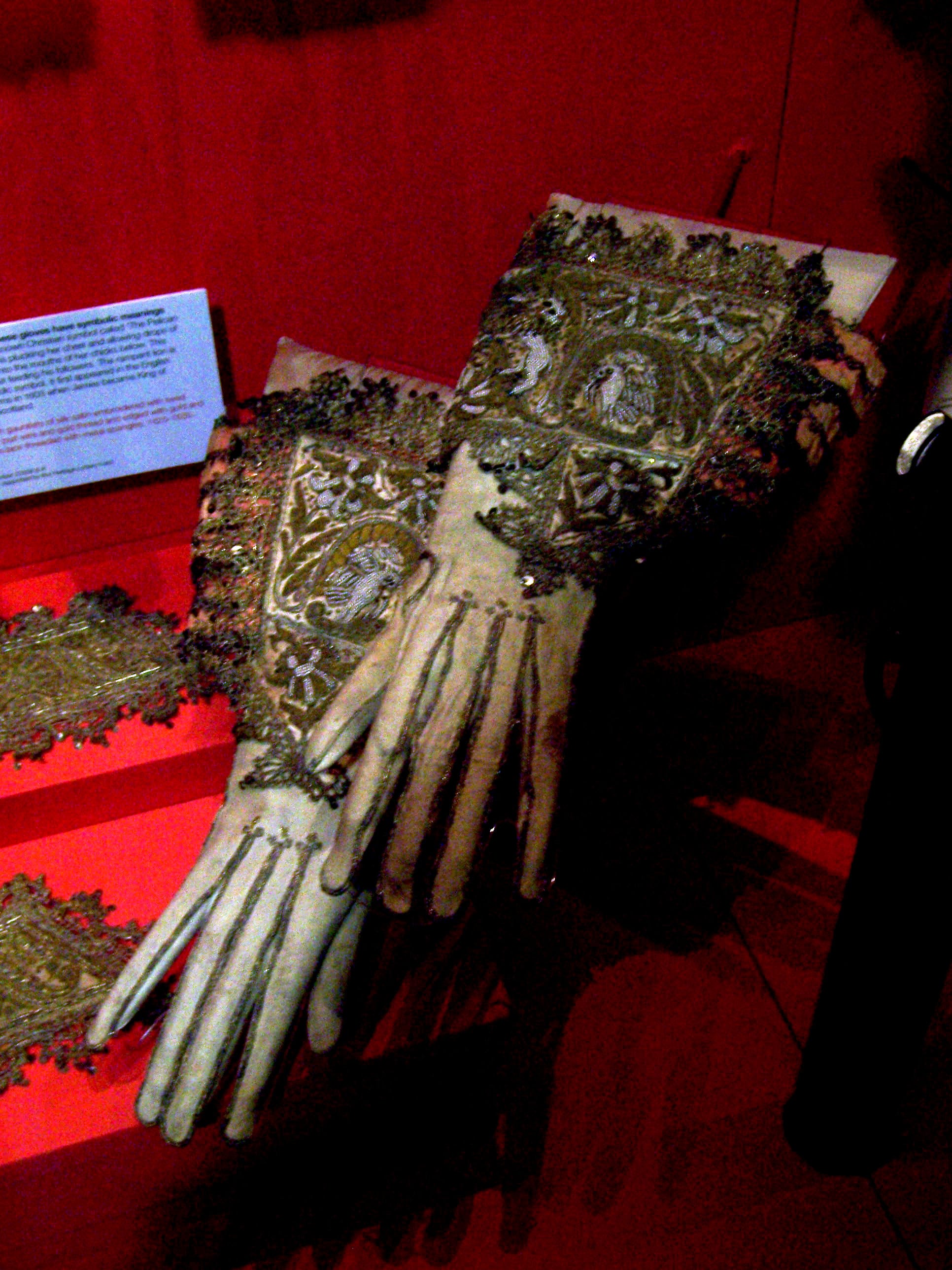
There is just so much inspiration here. I'm not saying I want to make a baroque gown that is two metres wide, or a pair of gloves with phenomenal embroidery; I'm talking more about individual elements. Embroidery motifs. Little stylistic details that wouldn't look out of place on a modern garment, like the way the lace is arranged on the front of the Silver Tissue Dress. Fringing on gloves. The basic idea of that yellow sack dress (not for me, I can't wear dresses due to Sibyl, but that shape was apparently invented by a queen who kept getting pregnant and didn't especially want to draw attention to the fact, and if you shorten it a little it still works brilliantly as a maternity gown or a nightie). All kinds of stuff like that. Not to mention the things that don't work, so you have to think about why they don't; for me, one of those is the extended finger gussets. I think they make the wearer look like Edward Scissorhands, especially that last pair where the edges are picked out with embroidery. Or the entire stomacher concept. I have no idea how they kept those things in place, but I can pretty much bet that if I tried wearing one it'd end up at a slant, which is a surefire way to mess up your entire look.
And there is, of course, a whole lot more to see besides the things I've shown you here. If you're ever in the area, it's very well worth a visit; and, of course, Bath is a lovely city in any case.
Do bring an umbrella, though. They call it Bath for a reason!
